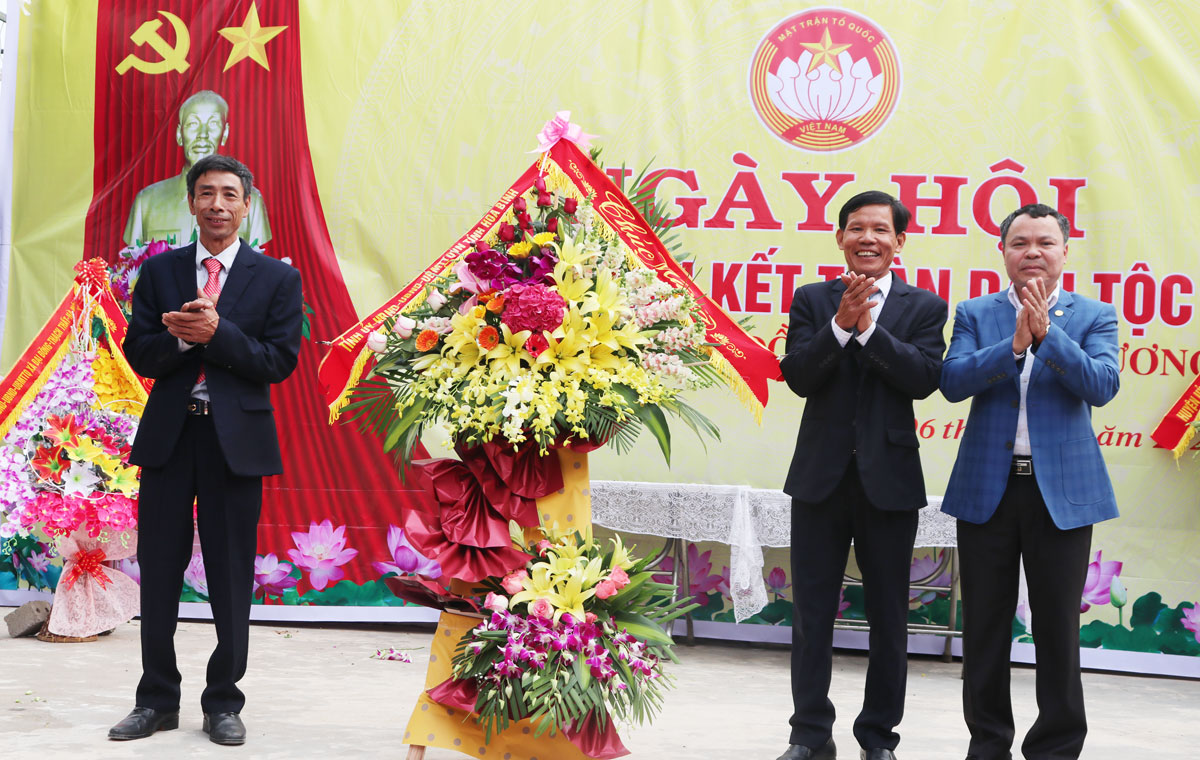
(HBO) - Dai Dong residential area in Yen Thuy district’s Ngoc Luong commune was the first in the district to hold a great national solidarity festival. The festival on November 6 saw the attendance of Nguyen Tien Sinh, head of the Hoa Binh Party Committee’s inspection commission and deputy head of the provincial delegation of National Assembly deputies. Other participants included leaders of the provincial Vietnam Fatherland Front committee, the provincial Military Command, the provincial Health Department, and local officials.
 Nguyen Tien Sinh, head
of the Hoa Binh Party Committee’s inspection commission, presents flowers to people
in Dai Dong on the occasion.
Nguyen Tien Sinh, head
of the Hoa Binh Party Committee’s inspection commission, presents flowers to people
in Dai Dong on the occasion.
The residential area has 192 households with 90 percent of
them living on agricultural production. Local people actively engage in
campaigns on building new-style rural areas and cultural villages. In 2020, the
local per capita income is estimated at over 60 million VND (2,591 USD), with
the rate of poverty households standing at 2.6 percent. All roads in the area
were concreted and 93.2 percent of local households were recognised as cultural
families. Dai Dong has so far met the criteria set for model new style rural
residential areas.
In 2021, Dai Dong aims to raise its per capita income to
more than 65 million VND and cut its poverty rate to below 2.6 percent.
At the festival, organisations, families, and individuals
with outstanding achievement in building the local community were honoured.
Locals were also encouraged to sign commitments to participating in emulation
campaigns next year.
On the occasion, leaders of the province and district
presented gifts to the residents./.
The People’s Committee of Lac Son district held a ceremony on April 28 to receive the provincial relic certificate for the ancient rock carving site at Suoi Co stream, located in My Thanh commune.
A special music show titled "The country is in the fullness of joy” has been held at Hoa Binh Square in Hoa Binh city in celebration of the 50th anniversary of the liberation of the South and national reunification (April 30, 1975–2025).
The People's Committee of Lo Son commune, Tan Lac district, has organised the local annual traditional stream fishing festival on April 19 - 20.
As a land deeply intertwined with human history and Vietnam’s millennia-long journey of nation-building and defence, Hoa Binh is often revered for its epic tales and legends.
Residents of Hoa Binh boast a rich cultural identity, reflected in their unique language, traditional attire, customs, and folk melodies – described as "sweet as honey, clear as a mountain stream.”
Lac Son district’s Vu ban town held the 2025 Truong Kha temple festival on April 12–13 (the 15th–16th days of the third lunar month). Since its revival in 2019, the festival has been organised every three years, preserving valuable intangible heritage while meeting the community’s cultural and spiritual needs.



 Nguyen Tien Sinh, head
of the Hoa Binh Party Committee’s inspection commission, presents flowers to people
in Dai Dong on the occasion.
Nguyen Tien Sinh, head
of the Hoa Binh Party Committee’s inspection commission, presents flowers to people
in Dai Dong on the occasion.